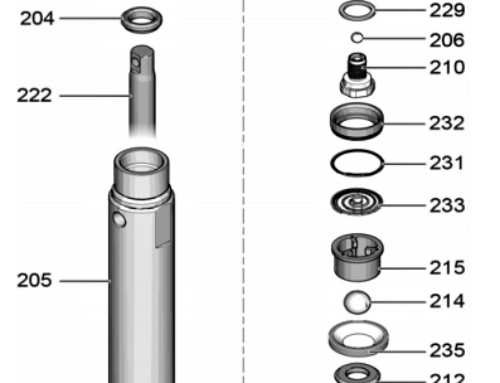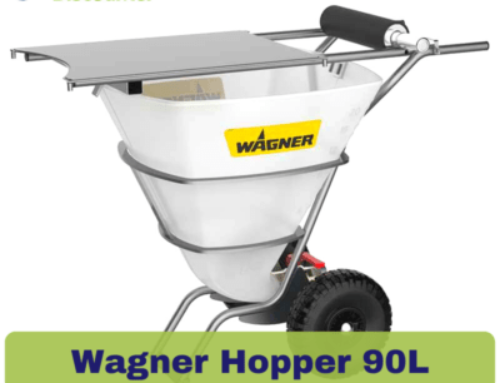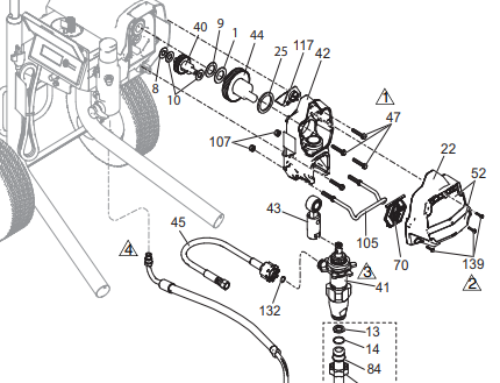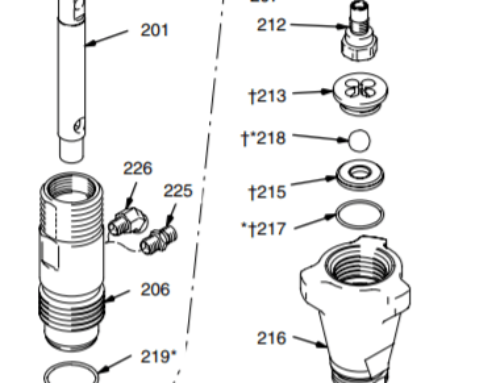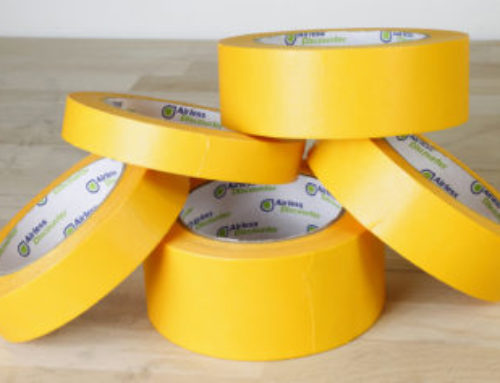Anyone who works regularly with longer Airless lances is familiar with the problem of spits and splashes. These imperfections in the spray pattern increase the as longer spray lances are used. The splashes and spits not only spoil your fun while you are at the job, but also provide a poorer finish. In the following article we will discuss what you can do about it and how to prevent spatters and splashes when spraying with nozzle extensions thanks to a correct working technique and/or the use of an anti-spit valve.

When do spatters and splashes occur?
If you use lances and extensions with an Airless spray gun, they are screwed onto a gun. The gun is then used to control the application of paint, ie when and what quantity of paint is pressed through the gun and lance to the nozzle. The pistol has a simple locking mechanism that allows two positions: open and closed. If you close the gun, no further paint flows into the lance in front of the nozzle. When you stop spraying but there is paint left in the lance, this reduces the pressure in the lance and the movement of the paint slows down. At some point, the pressure drops so much that it is no longer sufficient to spray the residual paint from the lance to the nozzle. This is when spits and splashes occur.
Factors that affect the formation of splashes and spatters:
- length of the spray lance
- size of the nozzle
- viscosity of the material
The longer the lance, the stronger the formation of spatters. With a lance length of 25 cm, the problem occurs less often than with an extension of 180 cm. Other factors include the nozzle size and the viscosity of the spray material.
What can be done against spitting?
There are basically two solutions for this problem, working techniques and the use of anti-spit valves. You can adjust the working technique to control spatters and splashes. This means you are trying to spray your surfaces without interrupting your workflow. The trigger is released only when the entire surface has been sprayed. You can then release the rest of the material left in the lance on a taped/protected/covered area.

However, this technique can not always be applied because not all surfaces can be sprayed in one go. It also requires some experience and skill. For all other cases, an anti-spit valve can be used. The valve is screwed to the front of the lance and does not let paint through below a certain pressure range. Considering that the spit-effect is caused by a pressure drop in the lance, this mechanism allows for the imperfections in the spray pattern to be be greatly reduced or avoided altogether.
Which anti-spit valves are available?
Anti-spit valves for airless lances are available by the two largest and most renown manufacturers … Wagner and Graco, of course, who else? The Graco anti-spit valve is called Clean Shot Off Valve and Wagner also has its own one.
Graco Clean Shot Off Valve
The Graco Clean Shot Off Valve can be screwed directly onto the extension. The valve can be adjusted with a screw. This makes it possible to set the pressure point at which the valve starts to work. This is a big advantage compared to other models, because you can tune the valve to your own work needs and pressure settings.

In addition, the valve is combined with a swivel joint and thus offers a valuable additional function, since the joint can be used to set the optimum angle to the surface. In this article we have illustrated how to best make use of swivel joints and lances.
The Graco Clean Shot Off Valve has the usual 7/8″ thread. Also included is a Graco RAC X tip guard and a Graco RAC X 517 spray tip.
Wagner ClearSpray anti-spitting valve for paint spraying
The Wagner ClearSpray anti-spit valve is simply screwed onto the lance. It is already preset so that no adjustments need to be made to the valve. In the test it was determined that the presetting of the valve is quite high and we had to spray with 160-170 bar, so that the valve triggers and starts to spray. The pressure range is thus fixed and there are no options to make adjustments, for example, if you want to inject with a lower pressure to change the spray pattern or reduce the formation of overspray.

The valve has a standard 7/8″ thread.
How are the anti-spitting valves installed on Airless spraying lances?
The valves can simply be screwed to the end of the lance. The tip guard with the spray tip is then screwed onto the valve. Make sure that the seals are on the valve and the tip guard.
Love our content? You can find more here:
Check out our Airless Discounter YouTube channel
Airless Discounter Instagram account
Questions or queries?
For any further questions or if you would like to get your hands on one of these products seen in this article, you can contact us on +49 (0) 30 220 15436, fill out our contact form below or email us. If you wish to purchase one of the products mentioned above, you can check them out in our online store. You can also visit us at our service base during office hours.


